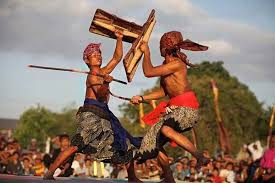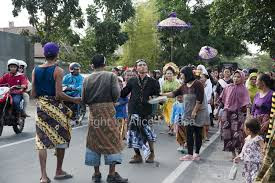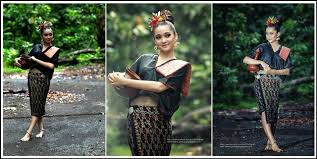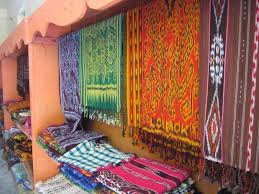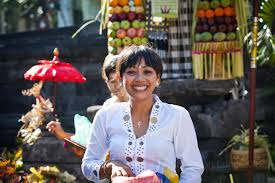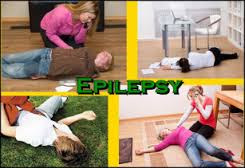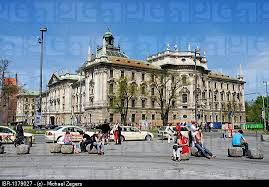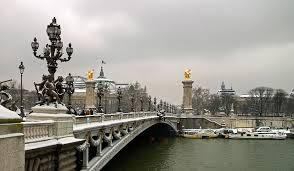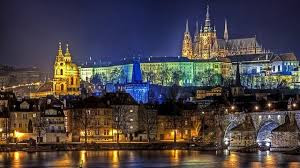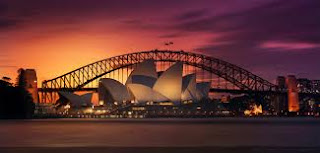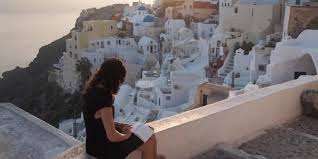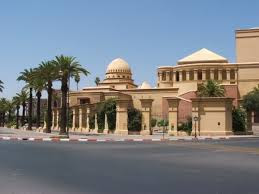Firenze (Latin: Florentia, English: Florence) is the capital of the province of Florence, Tuscany region, Central Italy. Split by the Arno River, in the foothills of the Apennine, the city population of 400,000 inhabitants. Firenze football club named Fiorentina.
The birthplace of the Renaissance, from the 14th century until 16, Firenze is known as a center of cultural, economic and financial importance in Italy and Europe that was dubbed "the Athens of the West".
Firenze is considered as the pioneer city of art and culture Italian revival. Literary works are born from great writers Firenze origin such as Dante, Boccaccio and Petrarch, written in the dialect of Tuscany which later evolved into the modern Italian language.
Most people who play a role in the development of many Renaissance was born in Florence and surrounding areas such as Giotto, Luca della Robbia, Botticelli, Verrocchio, Fra Angelico, Leonardo da Vinci and Michelangelo. Figures other influential Firenze origin in various fields including Brunelleschi (architect), Donatello (sculptor), and Mosaccio (painter). Machiavelli and Guicciardini who is the father of modern politics and history were also born here. Galileo also come from Tuscany and the end of his life was spent in Firenze.
In addition to the cultural center, Firenze is the financial district and the trade in the past which is marked by the emergence of banks and companies belonging to the Medici wool, Recellai, Peruzzi, Pazzi and Bardi. Its currency at the time was Florin.
After the 16th century, the role of an important city decreased slightly but is still known as a cultural center. In 1865, Florence was chosen as the capital of Italy until 1871. After World War II, the citizens of Florence to rebuild the city and rise from ruin. Once recovered, the city is re-visited by tourists who want to enjoy the cultural arts that have been well-known since long. In addition to tourism as a source of foreign exchange, other areas also add to the prosperity of the economy such as wool processing, leather crafts, wood carvings, stone intarsia and women's clothing. Major exhibition of antiques held two times a year and visited by people from different countries.
Tourist spots.
Florence's historic center extends over a distance of 3 km in the Porta San Gallo in the north of the River Arno until Porta Romana in the south. In this area there are many historic buildings such as castles and ancient church which still retains the atmosphere of the Renaissance. Unlike the city of Rome which absorbs all the elements of ancient and modern Rome, Florence reject all non Renaissance influences. Roman influence is only visible from the road design like an ancient amphitheater.
There is little baroque-style buildings such as the church of San Gaetano and San Firenze which appears to contrast with the Renaissance scenery around him. Modern buildings did not stand out but one of them can cope well as Stadio Artemio Franchi (football stadium) designed in 1932 by Pier Luigi Nervi.
Piazza del Duomo is one of the historical district with the most important buildings such as the Duomo (cathedral style Italian) as Basilica di Santa Maria del Fiore (Florence Cathedral) with towering dome designed by Brunelleschi. The main building of the cathedral-style Romanesque architecture designed by Arnolfo di Cambio, was built starting in 1296 and completed in 1436. Now the Cathedral of Florence made UNESCO World Heritage Site.
Museo dell'Opera del Duomo, the museum opened in 1891, contains the work of artists such as Luca della Robbia Florence, Donatello and Michelangelo, which was originally created to adorn the Basilica di Santa Maria del Fiore.
Campanile di Giotto or the Tower of Giotto Genta, located to the west of the Duomo, the height of 84 meters. Its construction was initiated by the Giotto between the years 1334-1337 and continued Andrea Pisano and Francesco Talenti.
Battistero di San Giovanni or San Giovanni Baptistery is octagonal baptistery decorated with marble and bronze portals, while the interior is decorated with Byzantine mosaics. Significant parts of the building that is the Porta del Paradiso (Heaven's Gate), made from 1425 to 1452 by Lorenzo Ghiberti. The south entrance of the building is designed Andrea Pisano of the year 1330-1338.
Orsanmichele or Chiesa di Orsanmichele (1337-1404) the church in the Via dei Calzaiuoli, between Piazza del Duomo and Piazza della Signoria. Originally was a warehouse for food, this Gothic-style building decorated with trefoil windows (leaf strand three). The niche-niche there are 14 statues of patron union Firenze designed Ghiberti, Nanni de Banco, Donatello and Verrocchio.
Piazza della Signoria, the square is dominated area of the building Palazzo Vecchio (Vecchio Palace) which is a fortress. Now the town hall of Florence, was originally founded in the 13th century by Arnolfo di Cambio. Interior palace designed by Giorgio Vasari and his assistant in 1500. One of the most beautiful room in the Palazzo Vecchio is Studiolo di Francesco I, who used Francesco I de 'Medici (1541-1587) as a workspace. Done by Vasari, the room is filled with beautiful paintings and luxurious interior.
Loggia della Signoria or (1376-1383) is the hall inauguration of regents and the head monk in the past. At this time as a museum statues and carvings is the favorite of the tourists, among others Perseo con la testa in Medusa (Perseus and Medusa Head) (1554) by Cellini, Ratto delle sabine (Rape of Sabine Women) by Giambologna, Donatello works of Judith and Holofernes , imitation marble David by Michelangelo, and Mazocco (heraldie lion) by Donatello. At that time around this building with a fountain Fountain of Fortune (1575, by Bartolomeo Ammanati) is the center of government. On May 23, 1498 a reformist monk Girolamo Savonarola named Dominicans and two of his friends hanged and burned in the square near the loggia, as written in bronze warning sign on the sidewalk.
Uffizi or Galleria degli Uffizi, is a museum-gallery that is located between the Palazzo Vecchio and the Loggia della Signora. Built in 1560, this building collecting works of Renaissance most comprehensive in the world are arranged in chronological order to allow visitors to study the development of classical paintings are complete, ranging from Byzantine painting to the work of Giotto, such as Primavera, Nascita di Venere (Birth of Venus), Annunciazione or Annunciazione in Cestello (Notices) works of Boticelli, Adorazione dei Magi (Adoration of the Magi) by Leonardo da Vinci, Doni Tondo (Holy Family) by Michelangelo, Ritratto di Leone X con i Cardinali, Giulio de 'Medici e Luigi de' Rossi ( Image Painting Leo X with Two Cardinals) and Madonna del Cardellino (Madonna Bird Goldfinch) by Raphael.
Palazzo Bargello (Bargello Palace) or Palazzo del Popolo (People's Palace), is building a palace located in an area with narrow streets and winding near the Palazzo Vecchio. Originally was a prison and barracks which is now an art gallery.
Santa Croce, the area within a few blocks of the Palazzo Vecchio with the main buildings such as Piazza Santa Croce (Square of Santa Croce) and the Basilica di Santa Croce (Basilica of the Holy Cross). Basilica di Santa Croce is the oldest Franciscan church in Florence. Here are the tombs of Michelangelo, Galileo and Rosini. Not far from the basilica there is the Cappella dei Pazzi (Pazzi Chapel) which resolved the 1460s with the design of Brunelleschi to the cost of the Pazzi family.
Biblioteca Nazionale Centrale di Firenze (National Library of Florence), a large library building which is about one block from Santa Croce. The library is included as one of the most important in Italy and Europe. The collection includes incunabulum or incunabula, books printed in Europe before the year 1500, the books of the Renaissance, as well as a copy of every book published in Italy since 1870.
Basilica of Santa Maria Novella, the main church of the Dominicans who built late 13th century for the help wealthy families of Florence. The inside is decorated with fresco-fresco Gothic and early Renaissance.
Palazzo Medici Riccardi or Palazzo Medici (Medici Palace), is a palace located in the north of the Piazza del Duomo, was built between 1444 to 1464 for Cosimo de 'Medici, founder of the Medici clan, the design results in Bartolomeo Michelozzo (Michelozzo). Fresco in it was done by Benozzo Gozzoli from 1459 to 1463.
Basilica di San Lorenzo (Basilica of St. Lawrence), the church was completed in 1459. Located near the bustling market and settlement, the church is likely to have been established since the year 393, so it is considered one of the oldest churches in Florence. Here the Medici clan leader was buried, ranging from Cosimo il Vecchio to Cosimo III. Church interior is equipped with Corinthian style columns. Being one of the parts in it, Sagrestia Vecchia (Holy Sacristy), a sacristy which was completed in 1440 on the design of Filippo Brunelleschi and the Medici clan support. Together with the San Lorenzo there is also the Biblioteca Medicea Laurenziana (Laurentian Library) which collects 11,100 old manuscripts and 4,500 ancient books.
Piazza San Marco (San Marco Square), located north of IIstana Medicci Riccardi. The most important building in this area is the Basilica di San Marco, which is now used as the Museo Nazionale di San Marco which contains important collections of paintings of Fra 'Bartolomeo, Domenico Ghirlandaio, Alesso Baldovinetti, Jacopo Vignali, Bernardino Poccetti and Giovanni Antonio Soglian. Several blocks east of San Marco Square are square Piazza della Santissima Annunziata.
University of Florence, one of the Studium, medieval university (11th century to 12) where the commencement of the study Greek, located east of the Piazza San Marco. To the west there is the Galleria dell'Accademia (Academy Gallery), which store the renowned statue of Michelangelo's David that worked from 1501 until 1504.
Palazzo Pitti (Pitti Palace), one of the museums that collect the works of Renaissance largest in Firenze. Located in the south of the Arno River not far from the Ponte Vecchio bridge. The original building dates from the 1458's is designed by Brunelleschi and was once the residence of Lucca Pitti, one of the biggest banker Firenze. Palazzo Pitti is currently used as a royal palace so Firenze Italian capital in the 19th century. Here there is a collection of Titian, Andrea del Sarto, Raphael and Fra Filippo Lippi. Behind piazza are the gateway to the Boboli Gardens, the design of the 16th century. In the west of the park there is the Basilica di Santo Spirito, the church also designed by Brunelleschi. The church is known for its beautiful altar paintings were done from the 14th century up to 17. In the church there are the Cappella Brancacci with a lot of religious paintings. On the west side of the church there is also Piazza del Carmine, which is located in the San Frediano which became a center of arts and workers. Piazza is reconstructed after a fire in the 18th century complete with fresco.
Villa I Tatti, Settignano building in the hills northeast of the city which became the building Harvard University Center for Italian Renaissance Studies (Harvard University Center for Italian Renaissance Studies). This building was donated by Bernard Berenson, researchers Renaissance art.
Arno river and bridges.
Arno river flows westward through downtown Firenze. In the summer, the river is shallow, but heavy rain may result in major flooding, as happened in November 1966. There are 7 pieces of the bridge that crosses the River Arno in Florence, such as the Ponte Vecchio (1333) which is currently closed to vehicles. On top of the bridge there is a corridor which connects the Uffizi to the Palazzo Pitti. Ponte Vecchio is the only survivor of the bombing of the German army in World War II that brought down five other fruits, including the Ponte Santa Trinita work Ammanati Bartolommeo. Now the whole bridge has been reconstructed back plus one more bridge named Amerigo Vespucci, a great adventurer origin Firenze. To the south of the Ponte Vecchio there is Via Guicciardini, with small shops selling handicrafts marble, leather and carved cameo. To the south again, passing Palazzo Pitti Palazzo Guicciardini there.
Culture.
Art.
Florence has a legendary art heritage. Cimabue and Giotto, the father of Italian painting, lived in Florence as well as Arnolfo and Andrea Pisano, renewers of architecture and sculpture; Brunelleschi, Donatello and Masaccio, the ancestors of the Renaissance, Ghiberti and Della Robbias, Filippo Lippi and Angelico; Botticelli, Paolo Uccello and universal genius Leonardo da Vinci and Michelangelo.
Their works, along with those of other generations of artists, who gathered in the several museums of the city: the Uffizi Gallery, Palatina gallery with paintings from the "Golden Age", the Bargello with the sculptures of the Renaissance, the museum of San Marco with Fra Angelico's work, the Academy, the chapels of the Medicis Buonarroti house with sculptures of Michelangelo, the following museums: Bardini, Horne, Stibbert, Romano, Corsini, The Gallery of Modern Art, the Museo dell'Opera del Duomo, museums and museum Silverware of Precious Stones. Great monuments is a cultural landmark Florentine art: the Florence Baptistery with the mosaic; Cathedral with the statue, medieval churches with bands of frescoes; public and private palaces: Palazzo Vecchio, Palazzo Pitti, Palazzo Medici Riccardi, Palazzo Davanzati; convent, monastery, refectories, the "Certosa". The archeology museum including documents Etruscan civilization. In fact the city is so rich in art that some visitors first experience the Stendhal syndrome because they find art for the first time.
Florentine architects like Filippo Brunelleschi (1377-1466) and Leon Battista Alberti (1404-1472) is among the fathers of the Renaissance and Neoclassical architecture.
Cathedral, topped by Brunelleschi's dome, dominates the Florentine sky. The Florentines decided to start building it - at the end of the 13th century, without a design for the dome. The proposed project by Brunelleschi in the 14th century is the largest ever built at the time, and the first major dome built in Europe since Roman times two large domes - the Pantheon in Rome, and the Hagia Sophia in Constantinople. Dome of Santa Maria del Fiore remains the largest brick construction of its kind in the world.
In front of it is a medieval Baptistery. Two buildings incorporate in their decoration transition from the Middle Ages to the Renaissance. In recent years, most of the important works of art of two buildings - and from close to Giotto's Campanile, was removed and replaced with a copy. The original is now housed in the Museum dell'Opera del Duomo, just east of the cathedral. Florence has a large number of art full of churches, such as San Miniato al Monte, San Lorenzo, Santa Maria Novella, Santa Trinita, Santa Maria del Carmine, Santa Croce, Santo Spirito, the Annunziata, Ognissanti and many others.
Artists associated with a variety of Florence from Arnolfo di Cambio to Giotto and Cimabue, Nanni in Banco, and Paolo Uccello; by Lorenzo Ghiberti and Donatello and Massaccio and family della Robbia, by Fra Angelico and Botticelli and Piero della Francesca, and to Michelangelo and Leonardo da Vinci. Others include Benvenuto Cellini, Andrea del Sarto, Benozzo Gozzoli, Domenico Ghirlandaio, Filippo Lippi, Bernardo Buontalenti, Orcagna, Pollaiuolo, Filippino Lippi, Verrocchio, Bronzino, Desiderio da Settignano, Michelozzo, the Rossellis, the Sangallos, and Pontormo. Artists from other regions who worked in Florence, including Raphael, Andrea Pisano, Giambologna, Il Sodoma and Peter Paul Rubens.
Uffizi and Pitti Palace are two of the most famous picture galleries in the world. Two outstanding collection of sculptures are in the Bargello and Duomo Works Museum. They are filled with creations of Donatello, Verrochio, Desiderio da Settignano, Michelangelo and others. Accademia has Michelangelo's David - perhaps the most famous work of art anywhere, plus statues of Michelangelo's unfinished slave made for the tomb of Pope Julius II. Other tourist attractions include the medieval town hall, the Palazzo della Signoria (also known as Palazzo Vecchio), the Archaeological Museum, the Museum of the History of Science, Palazzo Davanzatti, Stibbert Museum, St. Marks, the Medici Chapel, Santa Croce Occupation Museum, Museum of the Cloister Santa Maria Novella, the Zoological Museum ("La Specola"), the Bardini, and the Museo Horne. There is also a collection of works by the modern sculptor, Marino Marini, in a museum named after him. Strozzi Palace is the site of a special exhibition.
Language.
Florentine (fiorentino), Spoken by residents of Florence and its surroundings, is Tuscan dialect and the direct parent language to modern Italian.
Vocabulary and pronunciation are largely identical to standard Italian, though hard c between two vowels (as in Ducato) is pronounced as a fricative [h], similar to an English h. This gives Florentines very recognizable accent (which is called gorgia toscana). Other characteristics include using a form of the subjunctive mood last commonly used in medieval times, the use of which is often in everyday conversation of modern subjunctive, and short pronunciation of the definite article, [i] instead of "il".
Dante, Petrarch, and Boccaccio pioneered the use of vernacular instead of Latin be used for most literary work at the time.
Literature.
Although Latin is the main language of the court and the church, authors such as Dante Alighieri and many others use their own language, Florentine dialect, in composing their works. The oldest pieces of literature written in the vernacular goes as far as the 13th century. Florence literature fully developed in the 14th century, when not only Dante in his Divine Comedy (1306-1321), and Petrarch, but also poets such as Guido Cavalcanti and Lapo Gianni composed their most important works. Dante is the "Divine Comedy", which mainly deals with the poet himself taking a tour allegorical and moral of Hell, Purgatory and finally Paradise, where he met a real mythological characters or various age or before. He first guided by the Roman poet Virgil, the non-Christian beliefs damned him to hell. Then he joined Beatrice, who guided him through Heaven.
In the 14th century, Petrarch and Giovanni Boccaccio leading literary scene in Florence after Dante's death in 1321. Petrarch is the author of all-rounder, writer and poet, but is primarily known for Canzoniere, or Book of the Great, where he delivered the love of unceasing her to Laura. The writing style is becoming known as Petrarchism. Boccaccio is better known for his Decameron, the story a bit gloomy Florence during the plague 1350s, known as the Black Death, when some people left stricken city into an isolated country house, and spend their time there telling stories and novels taken from century medieval and contemporary traditions. All of this is written in a series of 100 different novel.
In the 16th century, during the Renaissance, Florence is the hometown of political writer and philosopher Niccolò Machiavelli, whose ideas about how the authorities should set the ground, scattered Prince detail in European courts and enjoyed enduring popularity for centuries. These principles became known as Machiavellianism.
Music.
Florence became the center of music during the Middle Ages and the music and the performing arts remain an important part of the culture. During the Renaissance, there are four types of music patronage in the city associated with both sacred and secular music. Countries, companies, churches, and private and it is here that the Florentine Camerata was held in the mid 16th century and experimented with setting the story of Greek mythology to music and staging the result-in other words, the first operas, setting the wheels in motion not only for further development from the opera form, but for the later development of separate "classical" forms like the symphony.
Opera is found in Florence in the late 16th century.
Composers and musicians who have lived in Florence, including Piero Strozzi (1550 - after 1608), Giulio Caccini (1551-1618) and Mike Francis (1961-2009).
Cinema.
Florence has been the setting for numerous works of fiction and movies, including the novels and movie-related, such as Light in the Piazza, Calmi Cuori appassionati, Hannibal, A Room with a View, Tea with Mussolini and Virgin Territory. This town is home to the famous Italian actors and actresses, such as Roberto Benigni, Leonardo Pieraccioni and Vittoria Puccini.
Cuisine.
Florentine food grows out of a tradition of farmers eat rather than cook a thin high. Most dishes are based on meat. The whole animal was traditionally eaten; tripe, (trippa) and (lampredotto) once regularly on the menu and still are sold at food carts stationed throughout the city. Antipasti include crostini Toscani, sliced bread rounds topped with a chicken liver-based Pate, and sliced meats (mainly prosciutto and salame, often served with melon when in season). Saltless typically Tuscan bread, obtained with natural levain frequently features in Florentine courses, especially in his soup, ribollita and pappa al Pomodoro, or in a salad of bread and fresh vegetables called panzanella that is served in summer. The bistecca alla fiorentina is large (the size customary to consider about 1200 grams - "40 oz.") - The "date" steak - T-bone steak that of Chianina beef cooked over hot charcoal and served very rare with earlier versions recently originated, the 'Tagliata, thinly sliced beef served with arugula put to sleep way, often with slices of parmesan cheese on top. Most of these courses are usually served with olive oil, also a prime product enjoying a worldwide reputation.
Research activities.
Research institutes and university departments located in the Florence area and within two campuses in Novoli and Polo Polo Scientifico di Sesto Fiorentino as well as in the Research Area of Consiglio Nazionale delle Ricerche.
Science and discovery.
Florence has become an important scientific center for centuries, especially during the Renaissance with scientists such as Leonardo da Vinci.
Florentines is one of the driving forces behind [Age [Discovery]]. Florentine bankers financed Henry the Navigator and the Portuguese explorers who pioneered the route around Africa to India and the Far East. It is a map drawn by the Florentine Paulo del Pozzo Toscanelli, a student of Brunelleschi, that Columbus used to sell "the company" to the king of Spain, and that he used on his first voyage.
Gallileo and other scientists pioneered the study of optics, ballistics, astronomy, anatomy, and so on. Pico della Mirandola, Leonardo Bruni, Machiavelli, and many others laid the foundation for our understanding of political science.
Fashion.
By the year 1300 Florence has been a center of textile production in Europe. Many rich families in Renaissance Florence is the main buyer of fine clothing is produced locally, and the importance of fashion in the economy and culture of Florence during the period that is often underestimated. Florence is considered by some as the birthplace and center of the beginning of the modern (post World War Two) in the Italian fashion industry. The Florentine "soirees" of the early 1950s held by Giovanni Battista Giorgini is the event where some of the now famous Italian designers participated in group exhibitions and first garnered attention internationally. Florence has served as the home of the Italian fashion company since 1928. Salvatore Ferragamo Gucci, Roberto Cavalli, Emilio Pucci and also based in Florence. Other major players in the fashion industry such as Prada and Chanel have large offices and stores in Florence or its outskirts. The main shopping street is an upscale Florence Via de 'Tornabuoni, where the great fashion houses of luxury and jewelry labels, such as Armani and Bulgari, have their elegant boutiques. Via del Parione and Via Roma is in the other streets are also famous for their high-end fashion stores.
Awakening history.
Scoppio del Carro.
The Scoppio del Carro ("Explosion Basket") is a celebration of the First Crusade. During Passover, the wagon, the Florentines call brindellone and led by four white bulls, brought to the Piazza del Duomo Baptistery of St. John the Baptist (Battistero di San Giovanni) and Florence Cathedral (Santa Maria del Fiore). Carts connected by a rope to the inside of the church. Near the cart is no model of a dove, which, according to legend, is a symbol of good luck for the city: at the end of the Easter mass, dove emerged from the middle of the Duomo and burn fireworks in the basket.
Calcio Storico.
Calcio Storico Fiorentino ("Historic Florentine Football"), sometimes called Calcio costume, is a traditional sport, which is regarded as the pioneer of football, although the actual gameplay most closely resemble rugby. This event comes from the Middle Ages, when the most important Florentine nobles entertained themselves playing while wearing bright costumes. The most important match was played on February 17, 1530, during the [Siege [of Florence (1529-1530) | siege of Florence.]] That day Papal troops besiged the city while the Florentines, the humiliation of the enemy, decided to play the game despite the situation. The game is played in Piazza Santa Croce. A temporary arena built, with bleachers and a sand-covered playing field. A series of games played between four teams representing each quartiere (quarter) of Florence during late June and early July.
There are four teams: Azzurri (light blue), Bianchi (white), Rossi (red) and Verdi (green). Azzurri is a quarter of Santa Croce, Bianchi of Santo Spirito quarter, Verdi is from San Giovanni and Rossi from Santa Maria Novella.
Tradition.
The Third Countship of Florence.
The fourth of four counts and countesses of Florence has a great tradition but hidden dating back to the early 20th century when the family left the preferred Tuscan cities to Malta and the youngest daughter of the family that was declared Contessa in Morabitto Florenze Morabitto Countess of Florence. To date there are eight members Countship, six live in Malta, one in English and one stay in Italy. Thank you for reading this article.
Written and posted by Bambang Sunarno.
sunarnobambang86@gmail.com
author:
https://plus.google.com/105319704331231770941.
name: Bambang Sunarno.
http://primadonablog.blogspot.com/2015/08/the-city-of-florence.html
DatePublished: August 1, 2015 at 17:08
Tags : The city of Florence.
Code : 7MHPNPADAEFW



